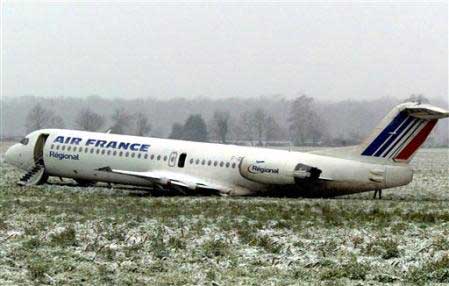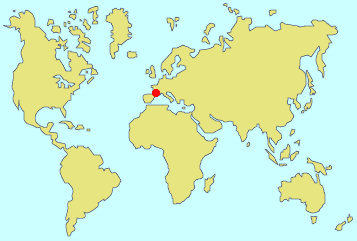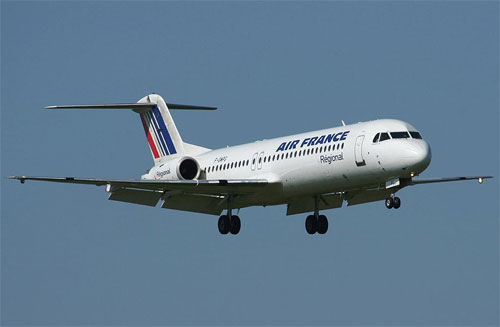Régional (Air France) Fokker F-100 plane crash
Pau, France

Updated on
 The Fokker 100 belonging to Regional Airlines, a subsidiary of the carrier Air France, was on a passenger flight between
Pau (France) and Paris (France) with 50 passengers and 4 crewmembers onboard. It crashed while attempting to take-off from
Pau airport in south-western France.
The Fokker 100 belonging to Regional Airlines, a subsidiary of the carrier Air France, was on a passenger flight between
Pau (France) and Paris (France) with 50 passengers and 4 crewmembers onboard. It crashed while attempting to take-off from
Pau airport in south-western France.
Just after lift-off, the twin-engine plane started to loose thrust. The captain declared a failure of the right engine to
the Air Traffic Controller. At the same time, the aircraft rolled on its left. The Fokker was not able to gain altitude and
the crew elected to perform an emergency landing in a field on the runway axis.
The plane struck the fence surrounding the airport, and hit a public works lorry travelling on a road around the airport.
The driver died in the accident. The landing gear tore off and the plane fell into a corn field. It skidded several hundred
metres before coming to a halt.
Passengers were quickly evacuated. Although shaken and shocked, none of the plane's passengers and crew was injured in the
mishap, but the aircraft has been severely damaged.
The probable cause of the crash is a wing or engine icing. The temperature recorded at the time of the accident was 0°C,
with a dew point at -1°C and high humidity. These weather conditions ease the formation of ice on airplanes, which
drastically decrease performances and may result in a crash.
Witnesses say that during its 40 minutes stop at Pau airport, the plane did not proceed to the standard de-icing procedure.
This procedure consists in washing wings and engine inlet with a hot glycol-based liquid before take-off, thus removing
all ice accumulation.
Details about aircraft icing
This kind of severe icing can occur when aircraft fly into particular weather conditions (for example, in a cloud of supercooled water droplets).- Ice accretion on the wing leading edge may occur. Airflow disruption will reduce the maximum lift coefficient
attainable by as much as 30% – 50%, thus raising the stalling speed considerably. And because the aircraft has to fly at a
greater angle of attack to maintain lift, the induced drag also increases and the aircraft continues to loose airspeed,
making it impossible to sustain altitude if the stall is to be avoided. The weight of the ice is also particularly
constraining.
- Air data probes may also iced, which leads to misleading airspeed indications.
- Finally, the engine air intake may also be impacted by icing, leading to a loss of power and a possible engine overheating.



